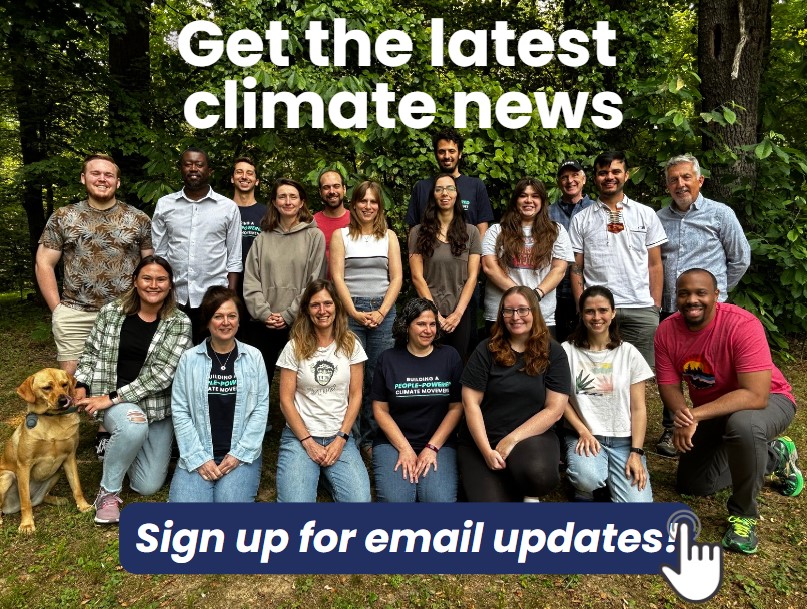By Xandra Coleman, Chesapeake Climate Action Network (CCAN) Intern
Overview
Biden’s January executive order on tackling climate change included a “Justice40” pledge promising 40 percent of all benefits from federal investments flow to disadvantaged communities. As the bipartisan infrastructure bill and budget reconciliation are working their way through Congress, how Justice40 will be formally enacted has become a matter of debate.Various NGOs and environmental groups have organized and published recommendations while the White House is attempting to address the concerns and initiate a pilot program for Justice40.
In the bill
The bipartisan bill does contain specific provisions that will benefit low-income and disadvantaged communities. Benefits include a $65 billion investment to make high-speed internet available to all Americans, provisions to eliminate lead pipes and provide clean drinking water, investments in public transportation, a program to reconnect communities previously divided by “inequitable transportation infrastructure,” providing ‘clean school buses to improve air quality for kids, remediation of Brownfield and Superfund sites, along with a range of improvements in climate and extreme weather resilient infrastructure and investments in clean energy. While these are tangible benefits, the infrastructure bill lacks specific language for allocation of funds to meet the Justice40 commitment. As the bill stands now, there are no guarantees that the Justice40 pledge will be honored.
Response by NGOs
In response to concerns over how Justice40 will be implemented, a number of organizations have produced a list of recommendations. The Equitable and Just National ClimateForum, New School’s Tishman Environment and Design Center, and the Center for AmericanProgress recommends establishing a system to identify disadvantaged communities, creating a process for stakeholder engagement, developing a Climate and Economic Justice Screening Tool to help identify critical service gaps, organizing a clear criteria for grant applications and oversight of projects to maximize investment benefits and minimize harm, expanding existing federal programs to ensure access for low-income and BIPOC communities, and creating an Environmental Justice Scorecard to promote accountability.
In March, over fifty environmental groups signed onto a letter detailing their recommendations to advance Justice40 while tackling climate change and economic recovery from the pandemic. The letter was sent to Congresswoman Nancy Pelosi and CongressmenCharles Schumer, Kevin McCarthy, and Mitch McConnell. Split into sections pertaining to water, energy, pollution free transportation and goods movement, and safe, healthy, and pollution-free communities, the letter contains direct actions the government should consider when allocating the Justice40 expenditures. Actions include $100 million for immediate potable water distribution, $3 billion for the Low-Income Household Drinking Water and WastewaterEmergency Assistance Program, $7 billion for the Low-Income Home Energy AssistanceProgram, and $2.5 billion annually for DERA, $16 billion for the Civilian Climate Corps.
Action from the White House
On July 20th, the White House published an update concerning how the administration plans to move forward with Justice40. Interim guidance issued by the Office of Management andBudget, Council on Environmental Quality, and the White House Office of Domestic ClimatePolicy introduced guidance for federal agencies, launched a Justice40 Pilot Program, and implemented accountability and transparency tools. Twenty-one programs ranging from theDepartment of Homeland Security Flood Mitigation Assistance Program to the Department ofAgriculture Rural Energy for America Program were identified to participate in the PilotProgram and begin immediately enhancing benefits for disadvantaged communities.The White House has plans to implement at least two of the Equitable and Just National Climate Platforms recommendations of an Environmental Justice Scorecard to monitor progress and hold the government accountable and a Climate and Economic Justice Screening Tool to better inform agencies about the needs of disadvantaged communities. The EPA already uses a version of the latter, however, the White House is waiting to release specific details on the progress of the screening tool until later this year. Until that date, the released interim guidelines contain thirteen variables to identify a disadvantaged community along with seven covered areas of investment and five covered forms of federal investment. By September 20th, each agency participating in the Pilot Program must submit to OMB an assessment of how the agency plans on investing in the disadvantaged communities along with the type of benefits that are expected. By December, the same agencies must submit to OMB their plan and methodology for calculating the expected benefits.
Works Cited
- The White House Briefing Room. “Executive Order on Tackling the Climate Crisis at Home and Abroad,” January27, 2021. https://www.whitehouse.gov/briefing-room/presidential-actions/2021/01/27/executive-order-on-tackling the-climate-crisis-at-home-and-abroad/.
- “Bipartisan Infrastructure Bill.” https://www.cnn.com/2021/08/01/politics/read-bipartisan-infrastructure-bill text/index.html. Sec. 62102, pg. 2015
- “Bipartisan Infrastructure Bill.” Sec. 50104, pg. 1893
- “Bipartisan Infrastructure Bill.” Secs. 11109, 11112, 11130 and Division-C
- “Bipartisan Infrastructure Bill.” Sec. 11509, pg. 386
- “Bipartisan Infrastructure Bill.” Sec. 71101, pg 2386
- “Bipartisan Infrastructure Bill.” Sec. 62001, pg 2582
- The White House. “Fact Sheet: Bipartisan Infrastructure Framework Will Address Barriers Communities of ColorFace to Economic Opportunity,” June 29, 2021. https://www.whitehouse.gov/briefing-room/statements-releases/2021/06/29/fact-sheet-bipartisan-infrastructure-framework-will-address-barriers-communities-of-color face-to-economic-opportunity/.
- “Justice40 Recommendations,” n.d.
- https://cdn.americanprogress.org/content/uploads/2021/03/16083513/Justice40-Recommendations.pdf?_ga=2.84088218.221935564.1630345041-574137610.1630345041.
- https://s3.amazonaws.com/ajustclimate.org/pdfs/Just+Economic+Recovery+Recommendations+March+23+2021.p df
- The White House. “The Path to Achieving Justice40.” Accessed September 4, 2021.
- https://www.whitehouse.gov/omb/briefing-room/2021/07/20/the-path-to-achieving-justice40/
- US EPA. “What Is EJSCREEN?” Overviews and Factsheets. EPA, October 20, 2014.https://www.epa.gov/ejscreen/what-ejscreen.
- Executive Office of the President, and Office of Management and Budget. “Memorandum for the Heads ofDepartments and Agencies,” July 20, 2021. https://www.whitehouse.gov/wp-content/uploads/2021/07/M-21-28.pdf.Pg. 2
- Executive Office of the President, and Office of Management and Budget. “Memorandum for the Heads ofDepartments and Agencies,” July 20, 2021. https://www.whitehouse.gov/wp-content/uploads/2021/07/M-21-28.pdf. xiv See Executive Office of the President, and Office of Management and Budget. Pg 7
- See Executive Office of the President, and Office of Management and Budget. Pg 7


